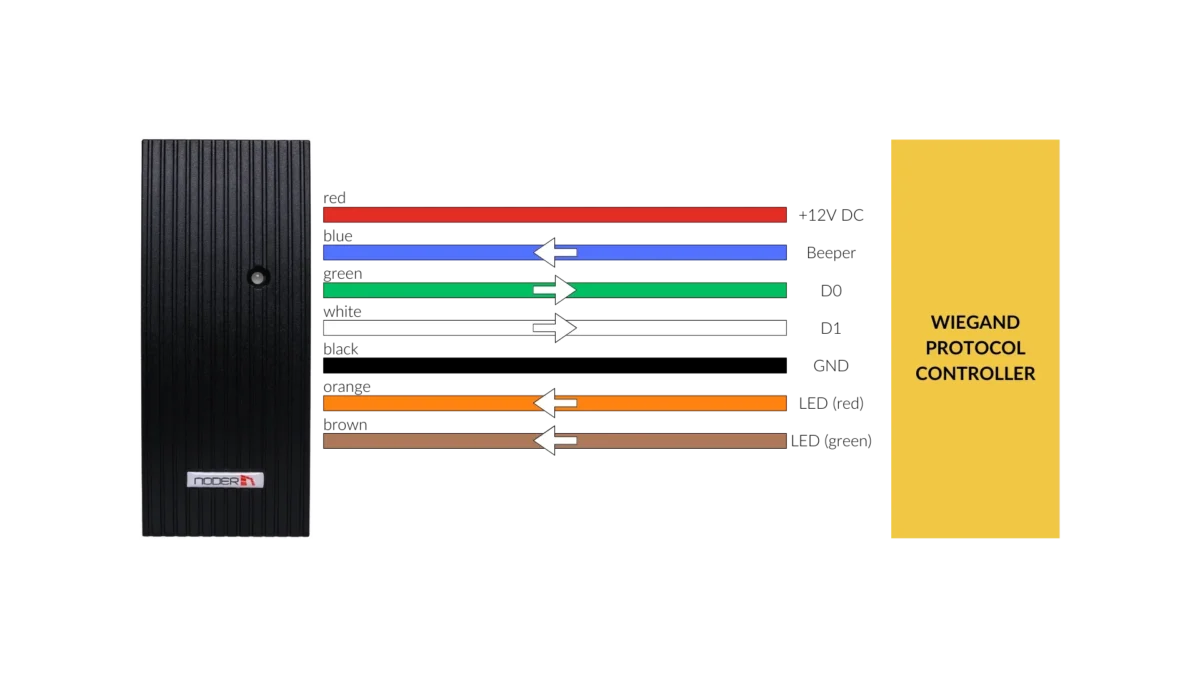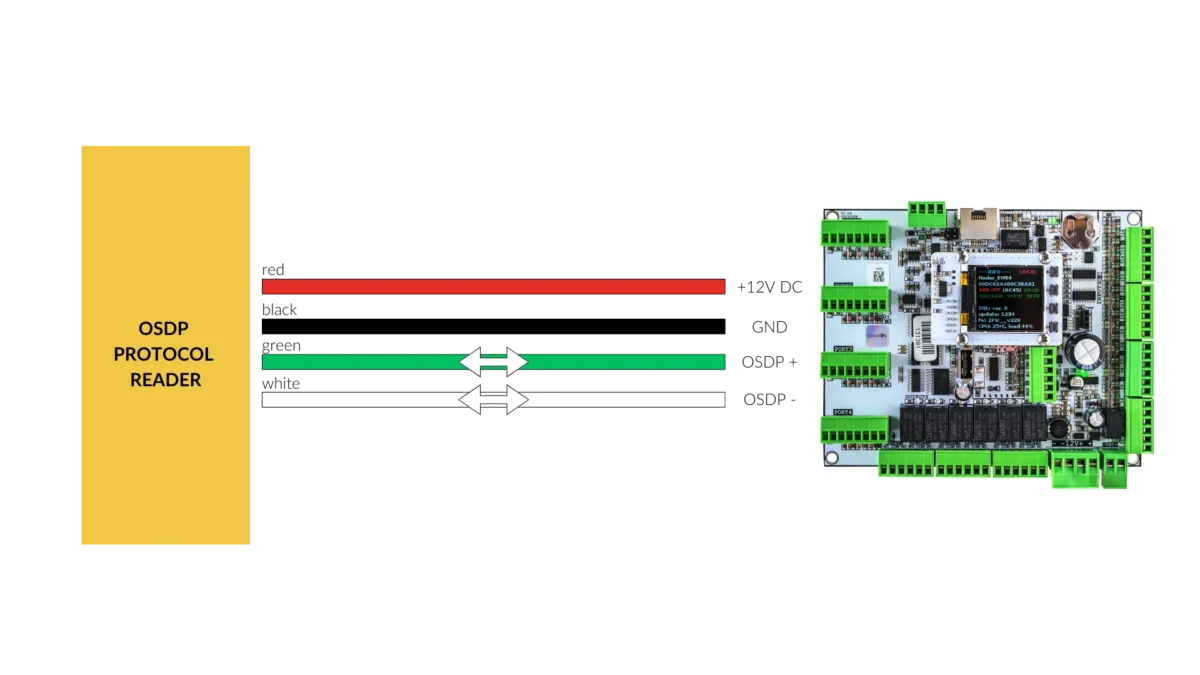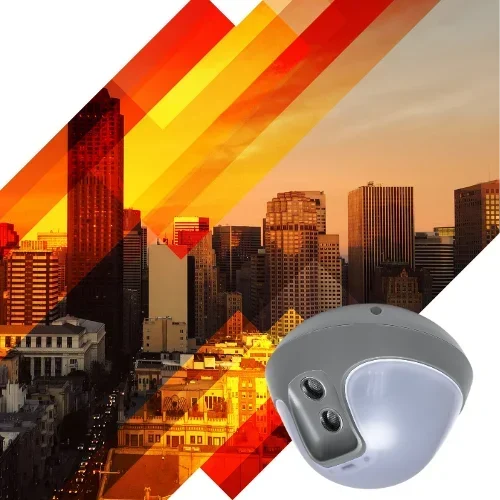Author: Rafał Gwoździowski
In the world of access control, several communication protocols exist in parallel. Some are only available within the products of one manufacturer and some are available for connecting devices from different manufacturers. For years, the Wiegand protocol was the benchmark for communication in electronic access control systems, but is it still? In a sense, yes. But should it? Definitely not! Such a standard is the OSDP protocol, which is becoming the leading communication standard for combining readers with access controllers into a single solution. OSDP offers many advantages over the well-known Wiegand protocol. We believe this comparison will explain the advantages of using the newer OSDP protocol, with an emphasis on its compatibility with third-party readers and the NODER product range.
What is the Wiegand protocol?
Wiegand is a standardised and widely used interface protocol that has been in use for over 40 years and is used to transfer data between access control readers and the access control controller that controls access. The Wiegand protocol allows only one-way communication from the reader to the controller. There is no two-way communication to provide the system operator with critical reader information or to update the reader’s firmware. The maximum distance between reader and controller is limited to 50-60m using a standard UTP/FTP cable and up to 150 m when doubling the number of wires. Read more about Wiegand at Wikipedia.

Pros and cons of using Wiegand protocol.
Pros:
Widely used
Readers with Wiegand are cheap
Controllers with Wiegand are cheap
Reader will work with any controller
Cons:
No connection encryption
One-way communication
No remote management
High risk of communication interception
Not supervised
What is the OSDP protocol?
In 2008, the US Security Industry Association (SIA) released the Open Supervised Device Protocol (OSDP), which eliminated some of the shortcomings of the Wiegand protocol. The original version of OSDP used, among other things, fewer wires, allowed devices to be connected over longer distances and allowed two-way communication, which made it possible to remotely manage and update readers. In 2020, a newer version of the OSDP protocol was released, i.e. version 2 (called OSDP v2.x or, more often, simply OSDP), which brought a long-awaited change, i.e. it allowed encrypted communication between a reader and a controller in electronic access control (EAC) systems. Read more about OSDP at SIA.

Pros and cons of using OSDP protocol.
Pros:
AES-128 Two-Way encryption (for OSDP v2.x only)
Up to 1000 meters connection (without power supply)
Remote management
Faster installation than readers with Wiegand
Supervised status of communication
More than one reader on sigle cable
Cons:
Only special versions of the readers have OSDP
Readers with OSDP are more expensive than those with Wiegand technology.
Proper communication of the controller with third-party OSDP readers may require additional integration work
OSDP and Wiegand protocols comparision
| Wiegand | OSDP | OSDPv2 | |
|---|---|---|---|
| Number required wires |
8 (5 for data + 1 for tamper + 2 for power supply) |
4 (2 for data + 2 for power supply) |
4 (2 for data + 2 for power supply) |
|
Max controller-reader distance for UTP/FTP cat 5/6 cable |
150 meters |
1000 meters (without power supply) |
1000 meters (without power supply) |
| Max number of readers connected in series | 1 | 4 | 4 |
| Communication encryption | no | no | yes |
| Sensitivity to interference | high | low | low |
| Suitable for use in elevators | no | yes | yes |
| Availability of readers on the market | high | low | average |
| Availability of controllers on the market | high | low | average |
| Possibility of communications interceptions | high | average | low |
| Max number of readers connected to one port | 1 | 4 | 4 |
| Two-way communication | no | yes | yes |
| Remote reader management | no | yes | yes |
| Possibility of injecting the overheard card number into the controller through reader protocol | high | average | low |
OSDP or Wiegand? Summary
So actually, why is OSDP a better solution? For several reasons, where the first one is the most important and the Wiegand protocol can’t do it – COMMUNICATION ENCRYPTION. Nowadays, communication security risks are very high and need to be minimised. After all, controllers are already installed on the supervised (secure) side of the access control system, the cabling is difficult for outsiders to access. Unfortunately, end devices, i.e. readers, are often installed in places where someone may want to have unauthorised access by installing a device that copies all traffic so they can jam actions or emulate the reading of specific cards.
The best thing a designer, end customer or installer can do is to choose the OSDP protocol to communicate devices from different manufacturers. Such a reader not only has supervised communication (which means that it will inform you immediately if there is no connection), but it is also usually equipped with wall tamper sensors and will inform you immediately (thanks to two-way communication) if there is an attempt to interfere.
Another argument for using OSDP is TIME AND MONEY. OSDP readers do not need such extensive cabling as readers connected via the Wiegand protocol. In addition, up to four OSDP readers can be connected on a single cable, while the Wiegand protocol requires a separate cable to go to each reader. This is a significant difference.
INTERCEPTIONS RESISTANCE. An aspect that is often overlooked or downplayed, unfortunately it is very important in some cases, and can cause some readers connected under Wiegand to not work. Also, Wiegand readers will not be able to be connected in elevators, for example. This is where OSDP readers have a huge advantage. They are resistant to interference and can be connected over much longer distances.
What to choose for Wiegand and OSDP?
In our product line you can find controllers with ability to connect Wiegand or OSDPv2 or our native enctrypted format readers without any additional converters or modules. EWE4 controllers are extremely versatile access control devices that allow you to build an advanced access control system quickly, safely and efficiently. Check out our solution for diffrent industries.




